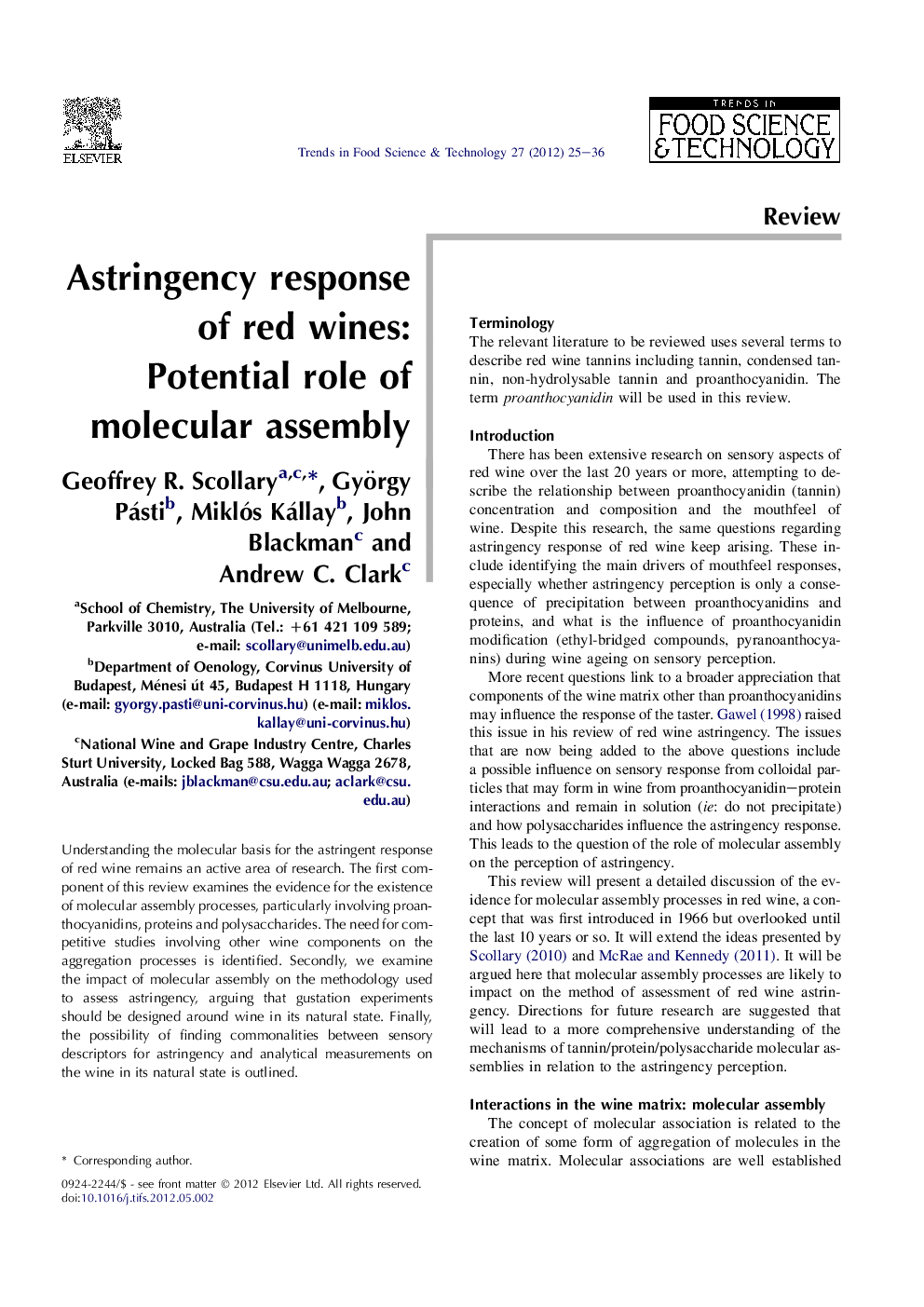| Article ID | Journal | Published Year | Pages | File Type |
|---|---|---|---|---|
| 2099880 | Trends in Food Science & Technology | 2012 | 12 Pages |
Understanding the molecular basis for the astringent response of red wine remains an active area of research. The first component of this review examines the evidence for the existence of molecular assembly processes, particularly involving proanthocyanidins, proteins and polysaccharides. The need for competitive studies involving other wine components on the aggregation processes is identified. Secondly, we examine the impact of molecular assembly on the methodology used to assess astringency, arguing that gustation experiments should be designed around wine in its natural state. Finally, the possibility of finding commonalities between sensory descriptors for astringency and analytical measurements on the wine in its natural state is outlined.
► Evidence for molecular assembly processes in red wine using model systems. ► Identification of need to establish impact of other wine components on assembly processes through competitive studies. ► Description of the impact of molecular association processes on astringency assessment. ► Need to consider molecular association in the design and interpretation of sensory assessment experiments. ► Possibility of finding commonalities between sensory descriptors and analytical measurements on wine in its natural state.
